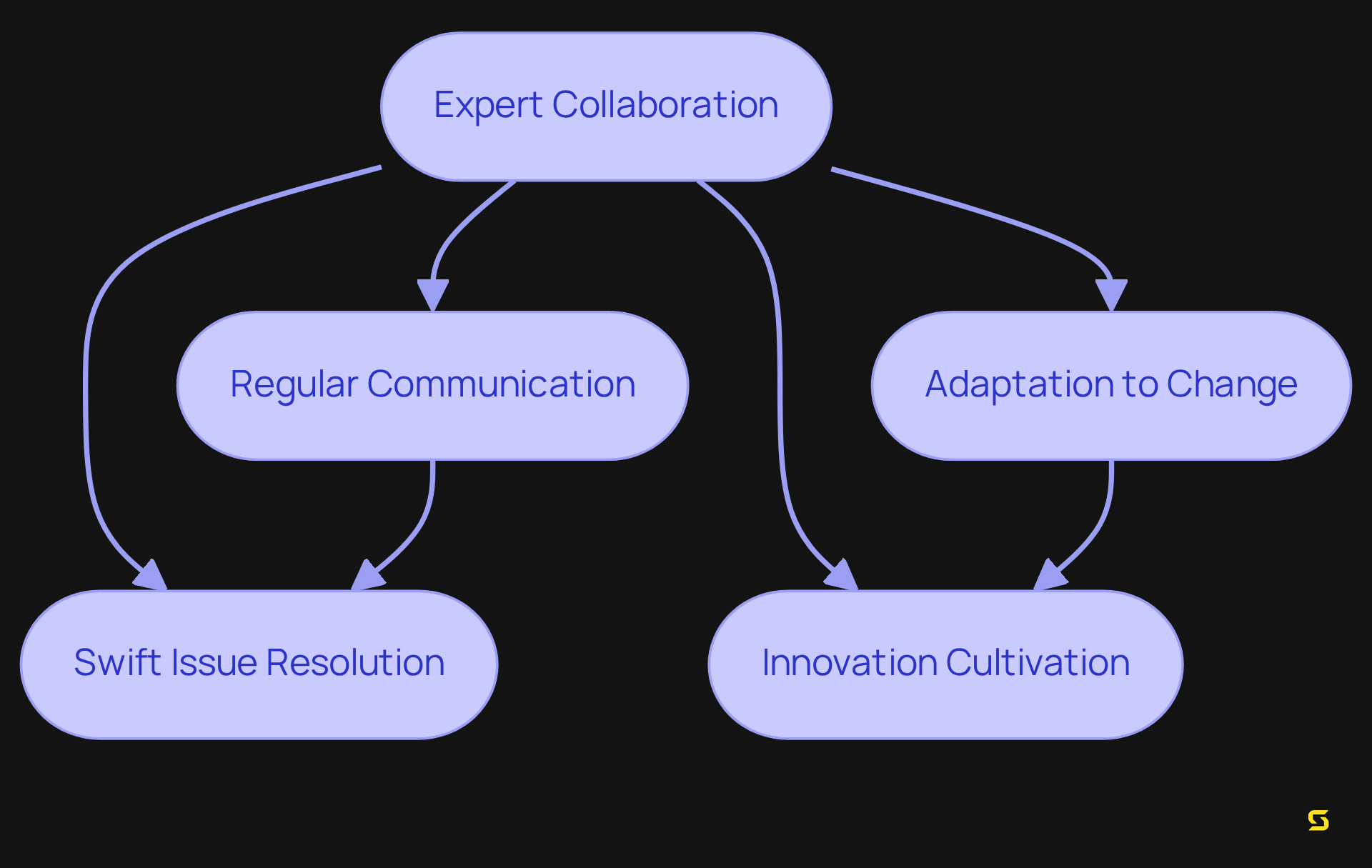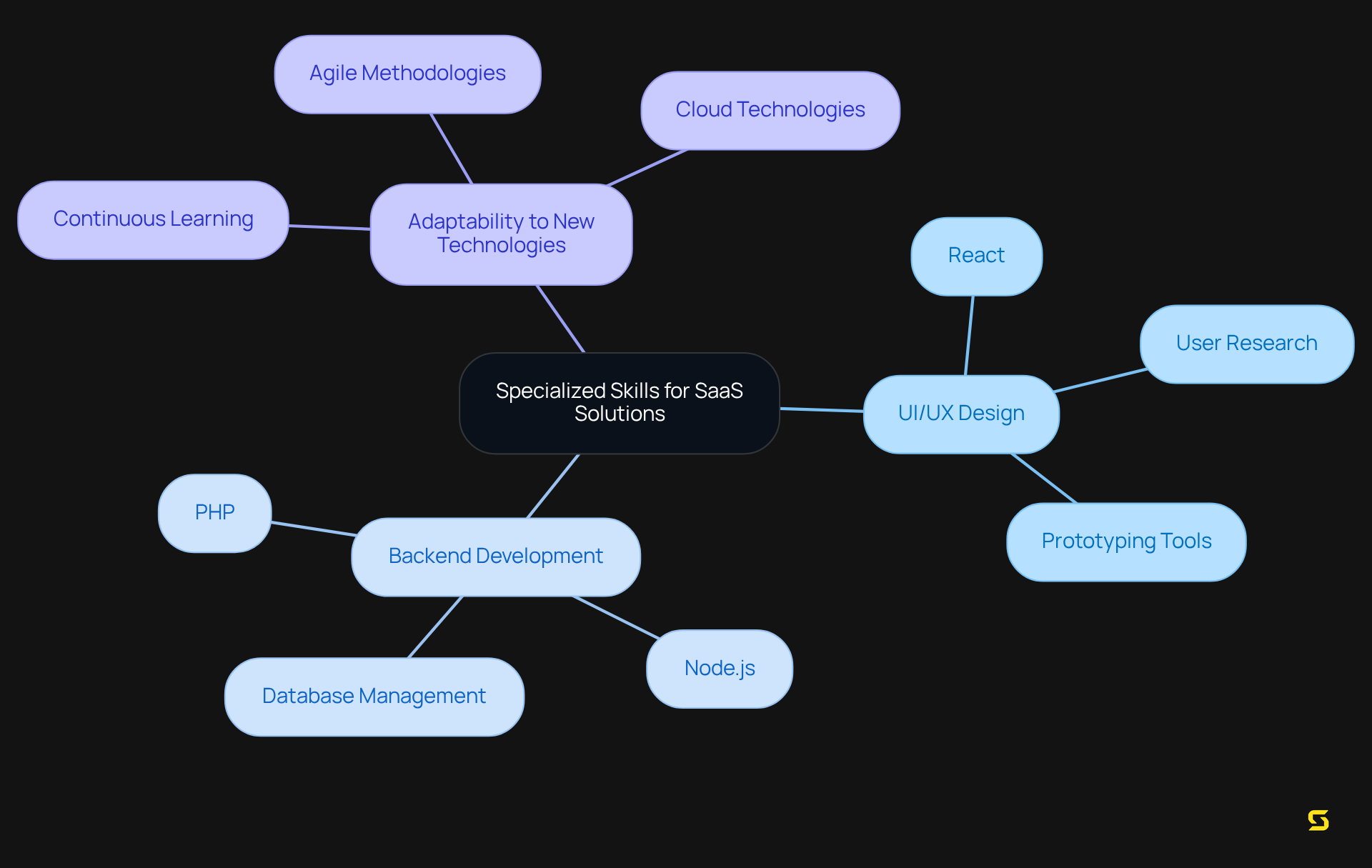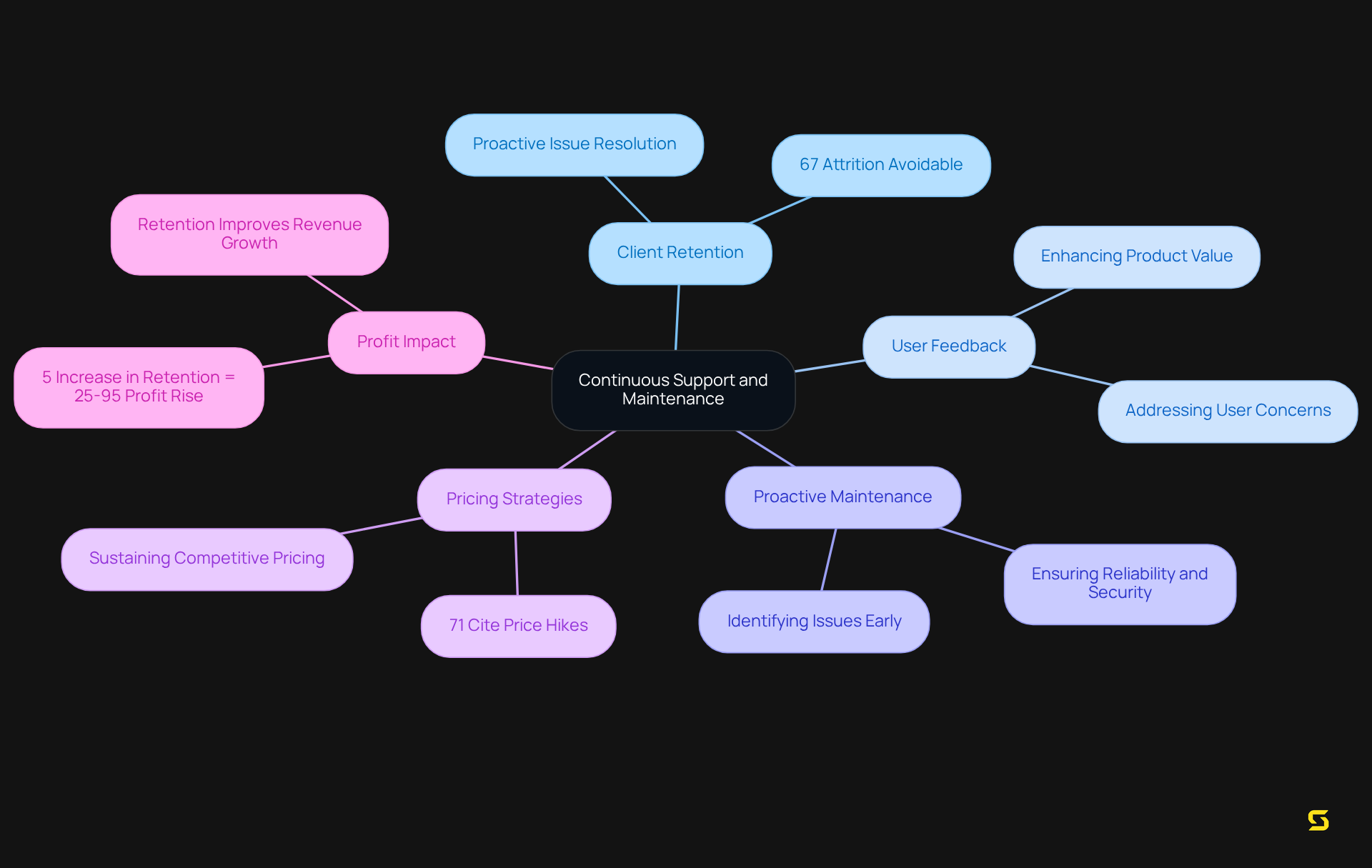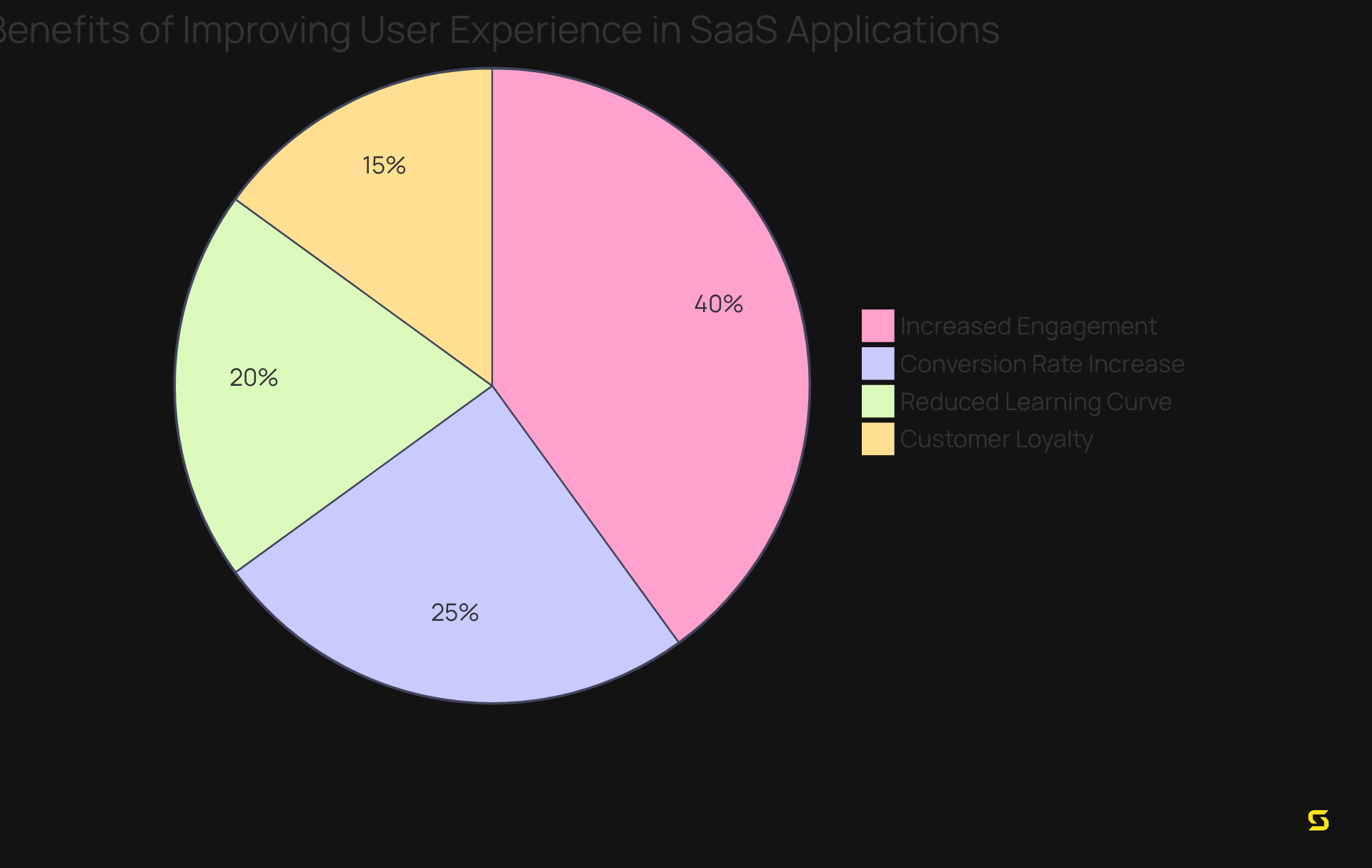Overview
A web development company is indispensable for achieving SaaS success. It enhances product development efficiency through expert collaboration, leverages specialized skills, and ensures long-term client engagement and satisfaction. Effective collaboration significantly reduces development time, while specialized skills lead to superior software solutions. Moreover, continuous support fosters client retention and loyalty. These elements are crucial for thriving in the competitive SaaS landscape. Therefore, investing in a proficient web development partner is not just beneficial—it's essential for sustained success.
Introduction
In the competitive landscape of Software as a Service (SaaS), the role of a web development company emerges as a pivotal factor in achieving success. These companies foster expert collaboration, leverage specialized skills, and ensure continuous support, all of which enhance product development efficiency and drive user satisfaction and retention.
However, the challenge lies in navigating the complexities of communication and maintaining a user-centric approach in design.
How can organizations effectively harness these elements to not only survive but thrive in the ever-evolving SaaS market?
Enhance Product Development Efficiency Through Expert Collaboration
In the fast-paced world of SaaS, enhancing development efficiency is paramount. Expert cooperation between software developers and project owners is essential to ensure that technical aspects align seamlessly with business objectives. This synergy not only accelerates the development process but also minimizes misunderstandings that can lead to costly delays. Notably, firms that outsource software creation can decrease development time by 30-50%, underscoring the efficiency achieved through collaboration.
When developers and stakeholders engage in regular communication, they can swiftly tackle issues, adapt to changes, and enhance features based on real-time feedback. As noted, "Collaboration eliminates inefficiencies and fosters a dynamic work environment by streamlining processes and allowing for agile responses to change." This collaborative approach cultivates a culture of innovation, where ideas can be rapidly tested and implemented, ultimately leading to a more robust and market-ready product.
However, organizations must also navigate challenges such as time zone differences and communication barriers that can hinder collaboration. Companies prioritizing such collaboration often experience a significant reduction in time-to-market, enabling them to capitalize on emerging opportunities faster than their competitors. Ultimately, promoting effective collaboration is crucial for attaining software-as-a-service success.

Leverage Specialized Skills for Superior SaaS Solutions
The complexity of software as a service (SaaS) solutions demands a diverse array of specialized skills. From UI/UX design to backend development, each component requires distinct expertise to ensure the final product is not only functional but also user-friendly. By leveraging specialized skills, companies can create exceptional software solutions that distinguish themselves in a competitive marketplace.
For instance, a team adept in React can craft dynamic user interfaces that significantly enhance user engagement. Simultaneously, backend developers proficient in PHP can guarantee robust data management and security. This specialization fosters a focused approach to problem-solving, allowing teams to innovate and iterate swiftly.
Furthermore, as the SaaS landscape evolves, access to specialized skills ensures that companies remain adaptable to new technologies and methodologies, thereby maintaining their competitive edge.

Ensure Long-Term Success with Continuous Support and Maintenance
In the SaaS model, the connection with clients extends well beyond the initial sale. Continuous support and maintenance are vital for ensuring long-term success. This ongoing engagement enables companies to effectively address user feedback, resolve bugs, and implement new features that enhance the product's value over time. Frequent updates not only enhance functionality but also demonstrate a commitment to client satisfaction, which can greatly reduce churn rates.
Indeed, 71% of survey participants mentioned price hikes as the main reason for client loss, emphasizing the significance of sustaining competitive pricing along with continuous support. Proactive maintenance allows businesses to identify potential issues before they escalate, ensuring that the software remains reliable and secure.
Businesses that emphasize ongoing assistance frequently find that their clients are more likely to renew subscriptions and suggest the service to others, promoting organic growth. As Brian Balfour, CEO of Reforge, notes, "Retention must be your top priority. Good retention improves everything from revenue growth to acquisition campaign ROI."
Furthermore, Amy Sarah John underscores that boosting client retention rates by merely 5% can result in a 25% to 95% rise in profits. This underscores the critical role of ongoing engagement in driving SaaS success. Moreover, addressing client concerns swiftly is essential, as studies indicate that 67% of client attrition is avoidable if issues are resolved during the initial interaction.
Companies that implement automated solutions for managing involuntary churn can further enhance customer retention by proactively notifying customers before their subscriptions lapse.

Improve User Experience Through Tailored Design Solutions
User experience is paramount to the success of SaaS applications. Customized design solutions that prioritize individual needs significantly enhance engagement and satisfaction. By implementing user-centered design principles, companies can develop intuitive interfaces that streamline navigation and improve overall usability. Comprehensive research on individuals to identify pain points empowers designers to create solutions that directly address challenges faced by users, resulting in increased adoption rates. A well-organized interface not only reduces the learning curve for newcomers but can also enhance conversions by 200%, enabling users to swiftly grasp the product's value.
Consequently, organizations that prioritize user experience through tailored design cultivate customer loyalty—especially considering that 32% of customers would abandon a beloved brand after just one negative experience. They also establish themselves as frontrunners in their industries. Investing in UX yields substantial returns, with every dollar spent potentially generating up to $100 in revenue. SaaS businesses with a strong UX strategy can see up to a 400% increase in conversion rates, underscoring the strategic importance of effective design in the competitive SaaS landscape.

Conclusion
In the competitive landscape of software as a service (SaaS), the pivotal role of a web development company cannot be overstated. By fostering expert collaboration, leveraging specialized skills, ensuring continuous support, and prioritizing user experience, businesses can significantly enhance their product offerings and market presence. Each of these factors contributes to a more efficient development process, ultimately leading to superior solutions that meet the evolving needs of users.
Effective collaboration between developers and stakeholders accelerates product development and minimizes costly misunderstandings. Furthermore, harnessing specialized skills empowers companies to innovate and adapt swiftly, ensuring that their software remains relevant and competitive. Continuous support and maintenance are vital in retaining clients and addressing their needs promptly, while a strong focus on user experience can dramatically improve engagement and conversion rates.
As the SaaS market continues to expand, investing in these critical areas is increasingly essential. Companies that prioritize collaboration, expertise, and user-centered design will not only enhance their product offerings but also cultivate lasting relationships with clients. Embracing these strategies will pave the way for sustained growth and success in the ever-evolving SaaS landscape.
Frequently Asked Questions
Why is expert collaboration important in product development for SaaS?
Expert collaboration between software developers and project owners is essential to ensure that technical aspects align with business objectives, which accelerates the development process and minimizes misunderstandings that can lead to costly delays.
How much can outsourcing software creation reduce development time?
Firms that outsource software creation can decrease development time by 30-50%, highlighting the efficiency achieved through collaboration.
What benefits does regular communication between developers and stakeholders provide?
Regular communication allows teams to swiftly tackle issues, adapt to changes, and enhance features based on real-time feedback, fostering a dynamic work environment.
How does collaboration impact innovation in product development?
Collaboration cultivates a culture of innovation where ideas can be rapidly tested and implemented, leading to a more robust and market-ready product.
What challenges might organizations face when promoting collaboration?
Organizations may encounter challenges such as time zone differences and communication barriers that can hinder effective collaboration.
What is the overall impact of effective collaboration on time-to-market?
Companies that prioritize collaboration often experience a significant reduction in time-to-market, enabling them to capitalize on emerging opportunities faster than their competitors.





